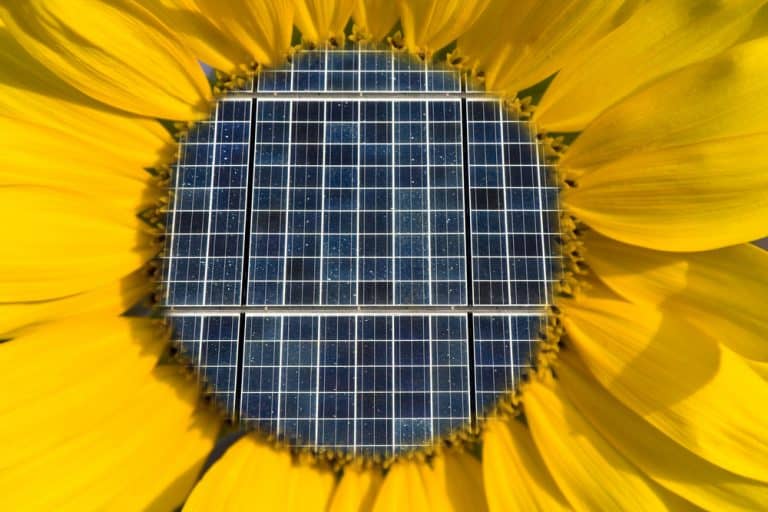The Inside of Solar Panels: What Reno NV Should Know

Understanding the inter-workings and mechanisms of solar panels will help Nevadans understand why Reno is one of the best locations for residential and commercial solar in the inter-mountain west. Keep reading to learn about the fundamentals of photovoltaics, including what makes solar panels produce energy.
Mono-crystalline Silicon Solar Cell: mc-Si
Mono-crystalline solar panels are the most trusted panels at this point in history, with the exception of NASA-grade solar panels, which are the most efficient in the world at 40% absorptive efficiency. This is due to their cell production capabilities. Light intensity, tracking angle, and cell temperature all play key roles in mc-Si performance as well.
Mc-Si is also a great term to toss around if you’re making banter with the best in the solar industry. People who know their subjects best tend to abbreviate them into easier-to-say chunks. And, given the rate of solar adoption in Nevada, Reno alone may weave solar abbreviations into its common vernacular.
Light Intensity’s Role
You can find light intensity by the rate of light energy delivered to a given area over a certain amount of time. light intensity combined with the correct wavelength determines the energy of light. Once this is determined, we are able to better understand how solar panels potentiate the radiation emitted from the sun.
Solar cells use silicon as the primary semiconductor to absorb light energy. Light energy in the silicon moves the electrons in the solar cells. This movement creates an electrical current known as direct current, which is the interstice between the solar panels’ role in production and the inverter’s role in translating the direct current into an alternating current.
Use of Tracking Angle in Solar Panels’ Production
The tracking angle tells us what angle the panel needs to be to absorb the optimal amount of light. This angle is dependent on the Angle of Incidence. The angle of Incidence is the angle between the line that points to the sun and the angle of the panel itself. If your Reno solar installer is worth their weight in gold, they’ll know the difference between these two mechanisms.
You want to minimize this angle as much as possible to get maximum light exposure and absorption from your solar panels. The angle of the sun in comparison to the earth depends on the time, not just time of day, but year as well.
Most residential systems are stationary. Stationary panels are dependent on an angle of incidence that maximizes light absorption the majority of the year. The EIA has found that the best direction for a stationary panel to tilt is south, and this discovery has been woven into the solar installation of both commercial and residential installations in the state of Nevada.
Cell Temperature, AKA ‘Temperature Coefficient’
On the data sheet for your solar panels, it will tell you what your solar panels’ temperature coefficient or pMax is. The pMax tells the efficiency of the solar panels when the temperature changes by as little as only one degree.
Solar panels test at standard laboratory conditions of 77 degrees Fahrenheit. Overheating your panels is worse for your panel production than a cold winter morning, ironically. In a perfect universe, sunlight without heat would be best for the absorption efficient of residential-grade solar panels.
What Is Solar Energy: Peak Sun Hours
The sun plays a major role in the production of your solar array, but not in the way you might think. Solar energy is best obtained in areas where there are more peak sunlight hours.
Peak sun hours are the amount of solar radiation an area of the earth can produce in a given day. This is different than the amount of daylight you have. On average, there are 3-5 sun hours in a day.
These are hours when the sun is highest in the sky. These hours are important because they are when the sun’s wavelengths are most intense, meaning you will be getting more energy during these hours than the rest of the day. If your home has a lot of shading and sunlight is difficult to obtain on your rooftop, a SolarEdge inverter may be your best bet, though it is installed less frequently than regular inverters.
Nevada’s Peak Sun Hours and Why They Matter
The average peak hours for Nevada is 6 to 7 and a half hours. This means that most of the day you are getting the most production that your panels can produce.
Current Results has found that on average, Reno, Nevada has 158 clear days in a year. Considering that most states have 100 days or less, this is pretty darn good, making the area optimal for solar energy, photovoltaics, and renewable energy in general.
Between 1971 and 2000, Nevada’s average temperature was 49.9 degrees Fahrenheit. Meaning that not only are your solar panels getting optimal light energy, but they are also not as likely to overheat.
So, the City of Reno Nevada Is Great For Solar. Now What?
Establishing that your location is ideal for solar panels on both residential and commercial levels is the first step. Now, you need to find out how best to harvest this bounteous energy source via a reputable Reno solar installer.
There are many different solar companies out there from whom you can choose. Which one is going to be the best fit for you will depend on your situation and what you value most. Getting several solar quotes is the best way to find out.
After filling out a quick survey for either your home or business, Go Solar Group will set up a time for you to get a free, no-obligation solar quote. This in-person appointment will give you the information you need.



Send a Message
Oops! We could not locate your form.